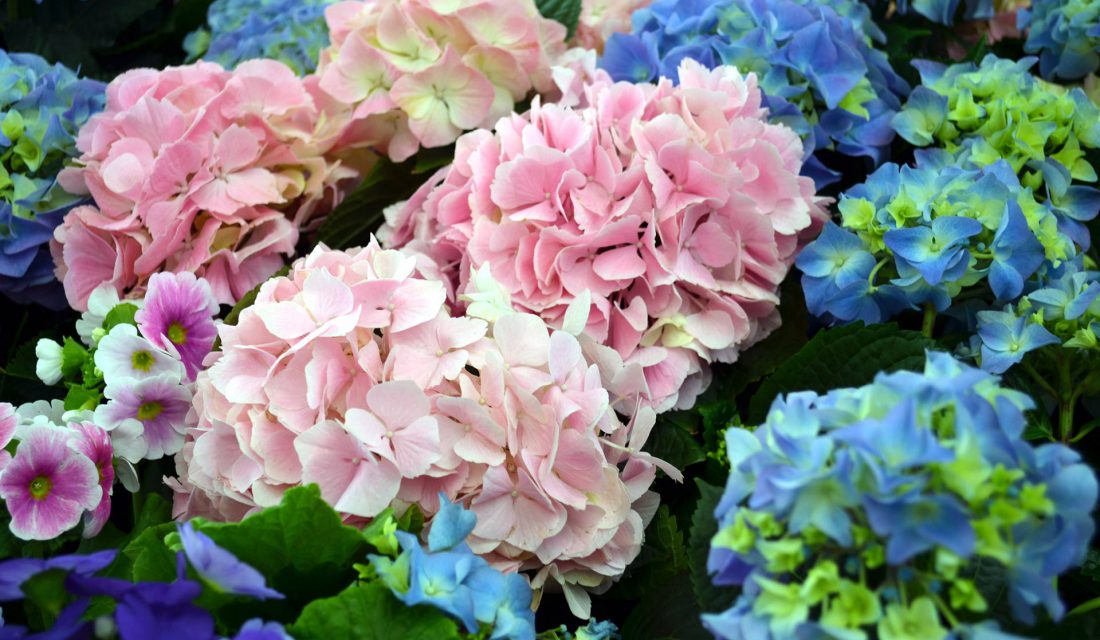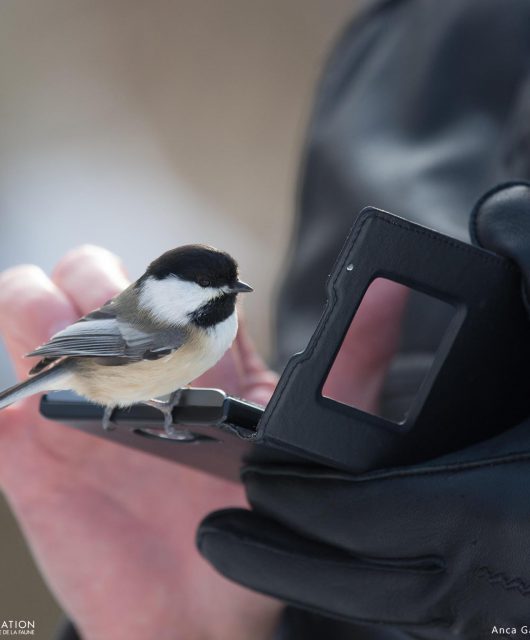Many people buy plants thinking they are helping our pollinators or birds.
But while a plant may look good to us, it may be unattractive or even harmful to the wild animals we wish to support.
Here are some important considerations before bringing home a plant that you think will be good for your wild neighbours.
Plants to Avoid

Avoid plants grown with neonicotinoids (neonics for short) as those pesticides remain in the plant and can harm pollinators that feed on its pollen or nectar as well as birds that eat their seeds or fruit. Ask at your nursery if they were ever treated with neonics, both at their facility as well as before they came to them, either as a seed, seedling or full grown plant. In the spring, check out CWF’s line of neonic-free plants sold at participating retailers.
Avoid plants that have been over cultivated to the point of no longer producing nectar and pollen. This can be seen in flowerheads that are actually a cluster of smaller flowers, such as the Mophead Hydrangea. Its inconspicuous fertile flowers in the centre were traded in for the showy sterile flowers that normally only grow around the edge of the flower head. By making most or all of the flowers in a flower cluster showy and sterile, we get to look at a big show on the plant but our wild neighbours lose out. This is especially so when you consider that our homes are popping up all over areas that were once natural and lush with viable plants for the wildlife that has coevolved there.
But how do you avoid these plants? One way is by looking at the flower to see if it is fluffier and fuller than it normally would be. So when looking at packets of zinnia seeds, for example, you might want to choose an heirloom that has minimal layers of petals rather than the pom pom-like ones that are now available which may still have fertile flowers in the centre but may be harder to find. Another way is by ask nursery staff what they know about the plants you are interested or go online and research what others have said about it. A third way is to observe the plants at the nursery that are blooming to see which ones have bees and flies landing on them versus cultivars of the same plant nearby that might not.
Avoid plants that are known to be invasive. These plants are not found in your area and have a tendency to spread into natural areas and grow so quickly or produce so many seeds that they outcompete our native plants. A reduction in our natural vegetation, be it trees or wildflowers, can have far reaching impacts by affecting the animal chain that depends on the native plants for food and shelter. Some plants end up here by accident while others are sold on purpose. And while nurseries mean well, most are not aware of all the invasive plants to watch for. You can help raise awareness by asking the question, even if they may not have the answer. Some examples to watch for are Butterfly Bush, Day Lily, bamboo and several non-native honeysuckles. Norway Maple is another example. It was brought over a few hundred years ago but that isn’t long enough for our insects to have adapted to its chemical make up and so it only attracts a few species. That might sound good to you but most of our insects do not cause serious damage or bite us but they do, however, feed our other beneficial insects and birds and other animals. This results in birds avoiding these trees as they don’t provide food for them or their young. It also means a reduction in insects that are in fact critical to our well-being. But besides not being native and harder on our wildlife, the Norway Maple spreads by its seeds to other areas where it can outcompete our native maples and make the ground inhospitable for many native wildflowers.
To determine which plants are problematic in your area, check with your provincial invasive plant or species council, some of which have a Grow Me Instead guide to help consumers find alternatives to some problematic favourite non-natives.
Plants to Include

With so many kinds of pollinators, birds and other wildlife all with different lifestyles, nutrient needs, mouthparts, nesting requirements etc., we can help them tremendously by including a diversity of plants. Fortunately, there are a lot of options in making this a reality in our outdoor space. We can have plants with different flower colours, shapes, sizes and bloom times. We can grow different plant types from trees and shrubs to perennials and vines as well as different species within each plant type. We can also include trees and shrubs that are evergreen (those that keep their leaves or needles) as well as those that are deciduous (those that lose their leaves or needles each fall).
It is very important where possible to include plants native to your region as they have co-evolved with the wildlife of that area and are often their perfect food. Some animals can adapt to a varying sources of food while others need a specific plant or plant group. This is the case with the Karner Blue Butterfly that is no longer found in Canada. It fed only on lupines which were wiped out, likely due to development. As a result, the Karner Blue has been extirpated from its natural home of southern Ontario.
As you choose plants that are right for your garden and you, remember that it is a balance. The more space you have to play with the more you can include beneficial habitat along with a few non-invasive favourites which may not be very fertile. Likewise if you only have a small yard, consider filling it with beneficial plants as much as possible with only a small portion of your favourite plants being infertile or non-native (although always avoid invasive and neonic-treated plants!). Then sit back and enjoy the sight and sound of your wild neighbours enjoying the garden with you!





1 comment
So informative and beautiful
Pictures.